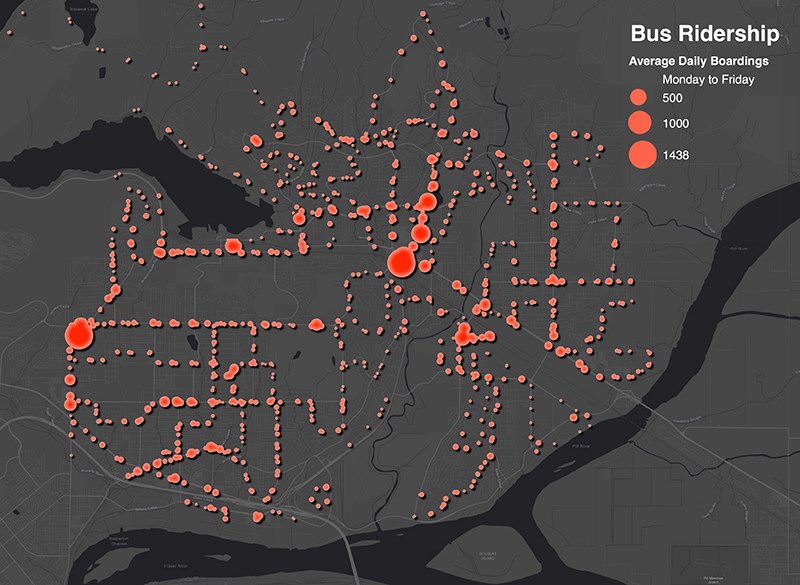They built it and the passengers came.
The opening of the Evergreen Extension in December 2016 is being credited with a dramatic uptick in public transit ridership in the Tri-Cities, according to TransLInk’s 2017 figures, which encapsulate the line’s first full year in operation.
The total number of boardings on all transit modes — buses and train — in the northeast sector increased 4.8 million, a 44% jump from 2016, when the Tri-Cities’ rapid transit line was still under construction.
“The growth in transit ridership in the Tri-Cities has been nothing short of extraordinary since the launch of the Evergreen Extension,” said Chris Bryan, TransLink’s senior media relations advisor.
The rise in ridership in the Tri-Cities has helped boost system-wide numbers, which show a 5.7% increase across the TransLink service area for a record 407 million boardings. Bus boardings rose 3.2% last year, while SkyTrain boardings increased 12%.
Coquitlam Central Station has been the busiest stop on the Evergreen Extension, with 4,000 average weekday boardings, ranked 37th in the system, while Burquitlam is second with 3,800 boardings, ranked 41st. Lincoln Station had 3,600 average weekday boardings (42nd) while Moody Centre had 2,000 (50th) and Inlet Centre had 1,900 (51st).
Lougheed Town Centre, which is part of the original Millennium Line but is also the spur for Evergreen, had 12,700 average weekday boarding, the 13th busiest stop in the system.
Not surprisingly, overall bus ridership in the Tri-Cities fell 23%, which Bryan said TransLink attributes to more people taking SkyTrain instead of the 97 B-Line that was phased out.
But the drop in bus boardings “was more than offset by the boost in overall ridership sparked by the convenience and speed of adding SkyTrain to the local transit network,” he added.
And there are initial signs that Evergreen could be spurring an increase in bus ridership.
Since TransLink re-worked its bus routes and schedule in early 2017 to improve connections with SkyTrain, bus ridership has risen 10%.
“Ridership on the majority of bus routes in the Tri-Cities was growing by the end of 2017 as compared to the beginning of the year,” Bryan said. “We expect these buses to continue to grow in ridership as they get established in the area and new riders are attracted to take transit due to the availability of SkyTrain.”
The 160 is the most popular bus route in the Tri-Cities, with 1.7 million annual boardings, ranking the line 47th in the system. The 152 had close to a million boardings in 2017 (ranked 73rd) while the 180 had 861,000 boardings (78th), the 188 had 731,000 (90th) and the 159 had 714,000 boardings (92nd).



